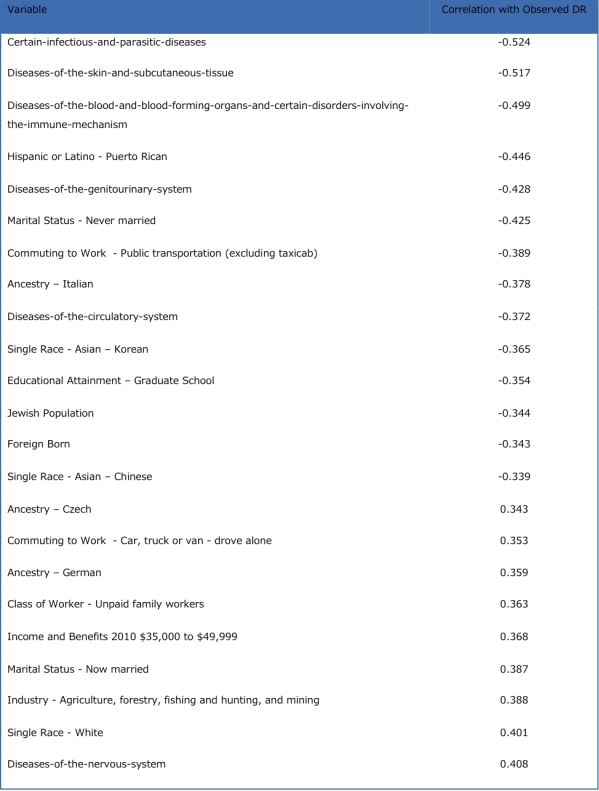U.S. Population Characteristics Impacting Rates of Organ Donation
1Systems Science and Industrial Engineering, State University of New York at Binghamton, Binghamton, NY
2New York Organ Donor Network, New York, NY.
Meeting: 2015 American Transplant Congress
Abstract number: D56
Keywords: Donation
Session Information
Session Name: Poster Session D: Disparities in Healthcare Outcomes
Session Type: Poster Session
Date: Tuesday, May 5, 2015
Session Time: 5:30pm-6:30pm
 Presentation Time: 5:30pm-6:30pm
Presentation Time: 5:30pm-6:30pm
Location: Exhibit Hall E
Many studies have assessed the impact of factors on organ donation, but have been limited to a few thousand subjects or less. The multicultural composition of the U.S. and associated variations in demographic and other factors, create geographic areas with distinct population features that are not found elsewhere. Population and individual characteristics have been shown to affect not only organ donation beliefs, but also consent rates. Organ procurement organizations (OPOs) gather extensive information about patients referred to them. But, it can be difficult to predict the outcome of a request for organ donation relying solely on patient data since those characteristics may differ from those of the authorized person making the decision. Gathering next of kin information is also a difficult task. We examined the counties found in the donation service areas of all 57 U.S. OPOs (excluding Puerto Rico). OPO performance, organ donation rates in particular, was collected and merged with demographic, social, cultural and economic data extracted from the 2010 U.S. Census, with cause of death data (by CDC 2010) and Jewish population estimates (from the Jewish Databank 2011). Analysis revealed that several factors are significantly (p-value less than 0.01) correlated with observed donation rates. For example, factors being significant negatively correlated include Never-Married population, Foreign Born population and Jewish population percentages. On the other hand, significant positively correlated factors are White, Now Married and Income and Benefits of $35,000 to $49,999 population percentages. These may provide insight into differential performance metrics and may guide research efforts directed at improving donation.
To cite this abstract in AMA style:
Schleich B, Yoon S, Khasawneh M, Srihari K, Tajik W, Irving H. U.S. Population Characteristics Impacting Rates of Organ Donation [abstract]. Am J Transplant. 2015; 15 (suppl 3). https://atcmeetingabstracts.com/abstract/u-s-population-characteristics-impacting-rates-of-organ-donation/. Accessed December 23, 2025.« Back to 2015 American Transplant Congress
